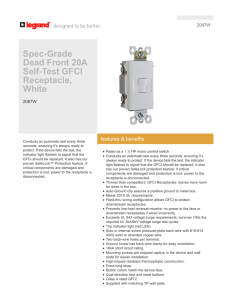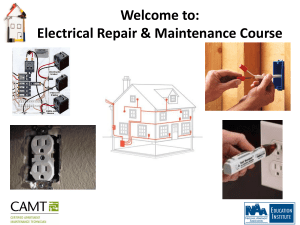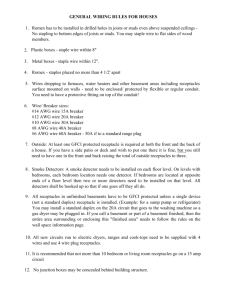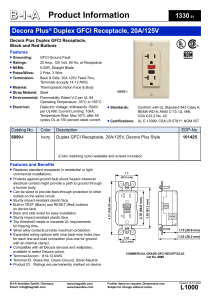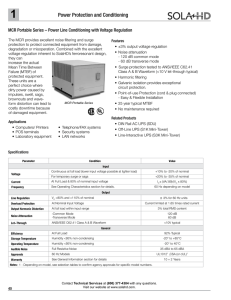FLASH \\ Replacement of existing kitchen counter split receptacle
advertisement
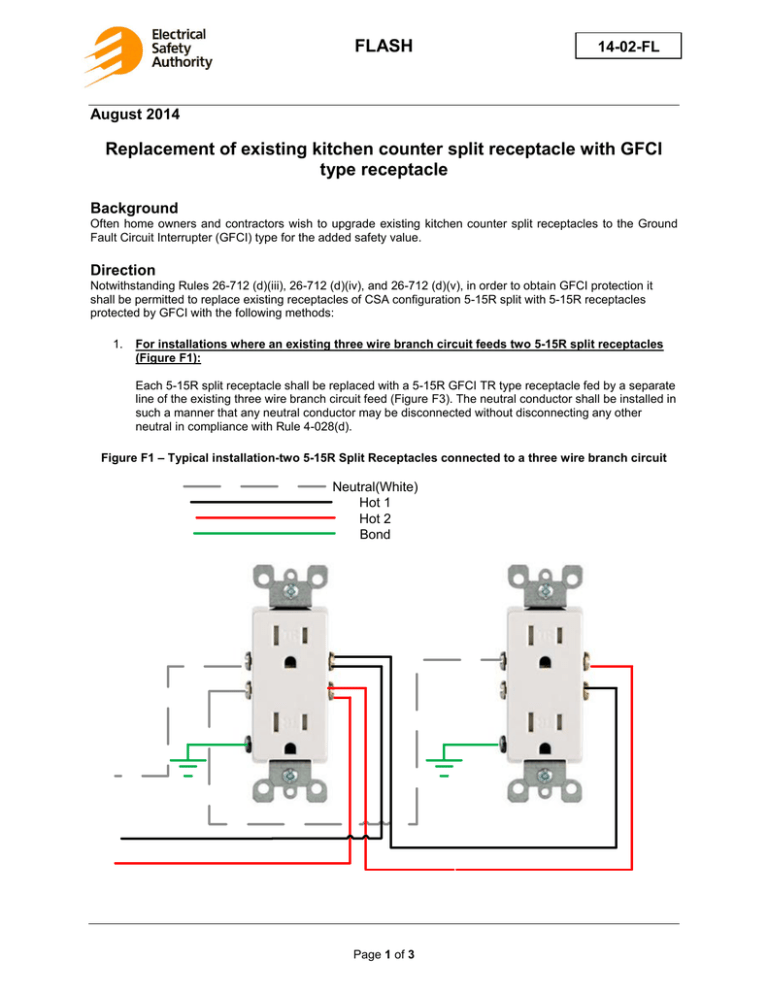
FLASH 14-02-FL \\ August 2014 Replacement of existing kitchen counter split receptacle with GFCI type receptacle Background Often home owners and contractors wish to upgrade existing kitchen counter split receptacles to the Ground Fault Circuit Interrupter (GFCI) type for the added safety value. Direction Notwithstanding Rules 26-712 (d)(iii), 26-712 (d)(iv), and 26-712 (d)(v), in order to obtain GFCI protection it shall be permitted to replace existing receptacles of CSA configuration 5-15R split with 5-15R receptacles protected by GFCI with the following methods: 1. For installations where an existing three wire branch circuit feeds two 5-15R split receptacles (Figure F1): Each 5-15R split receptacle shall be replaced with a 5-15R GFCI TR type receptacle fed by a separate line of the existing three wire branch circuit feed (Figure F3). The neutral conductor shall be installed in such a manner that any neutral conductor may be disconnected without disconnecting any other neutral in compliance with Rule 4-028(d). Figure F1 – Typical installation-two 5-15R Split Receptacles connected to a three wire branch circuit Neutral(White) Hot 1 Hot 2 Bond Page 1 of 3 FLASH 14-02-FL \\ 2. For installations where an existing three wire branch circuit feeds a single 5-15R split receptacle (Figure F2): In addition to replacing the existing receptacle with a 5-15R GFCI TR type receptacle, an additional 515R GFCI TR type receptacle shall be added to the counter top and connected as per Figure F3. Since the standard for GFCI receptacles requires both the Line and the neutral to be disconnected underground fault conditions, the requirement to have the neutral in compliance with 4-028(d) will still allow the second GFCI to operate if the first one is tripped or disconnected. Figure F2 – Typical installation single Split Receptacle connected to three wire branch circuit Neutral(White) Hot 1 Hot 2 Bond Page 2 of 3 FLASH 14-02-FL \\ Figure F3 – GFCI Replacement Method Neutral(White) Hot 1 Hot 2 Bond Line Side Electrical wiring is complicated and can present safety hazards if not properly installed and maintained. When planning to do electrical work, think about the risks associated with unsafe electrical installations. Contact a licensed electrical contractor, and make sure they arrange for an electrical inspection. You may use the following link to find a licensed electrical contractor in your area http://applications.dmtispatial.com/esa/ The Ontario Electrical Safety Code requires an "Application for Inspection" to be filed with the Electrical Safety Authority before or within 48 hours after the commencement of work*. Electrical wiring and equipment must not be covered prior to inspection. (*) Note: If the work is performed by the home owner, an application for inspection is required. If the work is performed by a Licensed Electrical Contractor (LEC), although the replacement is not considered as a like for like application as stated in Sub-rule 2-005(a)(iii), an application for inspection is not required. Page 3 of 3
